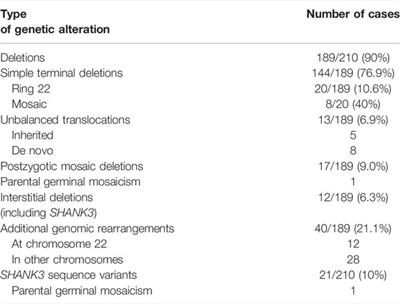ORIGINAL RESEARCH
Published on 12 Apr 2022
Variability in Phelan-McDermid Syndrome in a Cohort of 210 Individuals

doi 10.3389/fgene.2022.652454
- 6,734 views
- 35 citations
16k
Total downloads
72k
Total views and downloads
ORIGINAL RESEARCH
Published on 12 Apr 2022

EDITORIAL
Published on 05 Apr 2022
CASE REPORT
Published on 20 Aug 2021

ORIGINAL RESEARCH
Published on 30 Jul 2021

ORIGINAL RESEARCH
Published on 11 Jun 2021

ORIGINAL RESEARCH
Published on 08 Jun 2021

ORIGINAL RESEARCH
Published on 07 May 2021

ORIGINAL RESEARCH
Published on 29 Apr 2021

REVIEW
Published on 14 Apr 2021

ORIGINAL RESEARCH
Published on 14 Apr 2021

ORIGINAL RESEARCH
Published on 01 Apr 2021

ORIGINAL RESEARCH
Published on 26 Mar 2021

